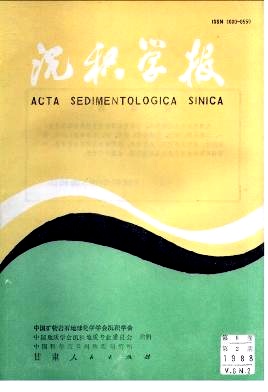HTML
| [1] | Bjoerlykke, A.,and Sangster, D.F.,1981,Econ.Geol.;Seventy-fifth anni-versary volume, p.179-213. |
| [2] | Bethke, C.M.,1986,Econ.Geol.vol.81, No.2 P.233-246. |
| [3] | Chen, N,S.,1983, Peking Mineral Deposits, Vol.2, No.3, p.79-87. |
| [4] | Cathles, L.M.,1981,Econ.Geol. Seventy-fifth anniversary volu m e, p.424-457. Franklin, J.M.,Sangster, D. M.,and Lydon, J.W.,1981, Econ. Geol.,Seventy-fifth anniversary volu me, p.485-627. |
| [5] | Gustafson, Lewis, B.,and Williams, Neil, 1981, Econ geol: Seventy-fifthattniversary volu m e, p.139-178. |
| [6] | Liu, B .J.(Ed.),1980, Sedimentary petrology, Peking:Geological Publishing House. |
| [7] | Liu, B. J.,and Zeng, Y. F.(Ed.),1985,Foundation and method of Iithofacies-palaeogeography, Peking:Geological Publishing House.Liu, W. J.,1984, Peking,Mineral Deposits, Vol. 3, No.3,p.38-46. |
| [8] | Liu, G .M.,and Jian, H. M.,1983, Peking" Mineral Deposits, Vol.2, No,3,p. 43-50. |
| [9] | Hutchinson, R. W.,1983, E con.Geo1. Vol. 78, No.8, P.1734-1741 |
| [10] | Sangster, D.F.,1983, Mississippi Valley-type depositst a geological melange:in International Conference on Mississippi Valley-type Iead-zinc deposits, Proceeding volume, p.7-19. |
| [11] | Sangster, D.F,Kirkham, R. V.,Ruzicka, Vladimir,Econ .Geol.,Report-Geological Survey of Canada, 36, p.and se11, R.T.,1984,25-28 |
| [12] | Schroll, E.,1984, Geochemical indicator parameter of lead-zinc ore deposits in carbonate rocks,in Waushkuha, A, (Ed), Syngenesis and epigenesis in the forma-tion of mineral deposits, p.298-304 |
| [13] | Tu, G. Ch.,et al, 1984, Geochemistry of strata-bound ore deposits of China,Vol. 1,Peking; Science Publishing House |
| [14] | Zeng, Y. F.,and Zhang, J.Q.,1983, A cta Sedimentologica Sinica, Vol. 1No. 1 p. 42-49 |
| [15] | Zeng, Y. F.,Liu, W. j,and Zhang, J,Q.,1986,Journal of Chengdu College of Geology, Vol. 13,No.3. p.3-11 |
| [16] | Zhang, J .Q.,and Lin, W. Q.,1984, Joural of Chengdu College of Geology,Vol. 11,No. 4, p. 23-33 |
| [17] | Wolf,K. H. (Ed),1976, Hand-book of strata-bound and stratiform ore deposits, vol. 7, Elserier Scientific Publishing Company. |






 DownLoad:
DownLoad: